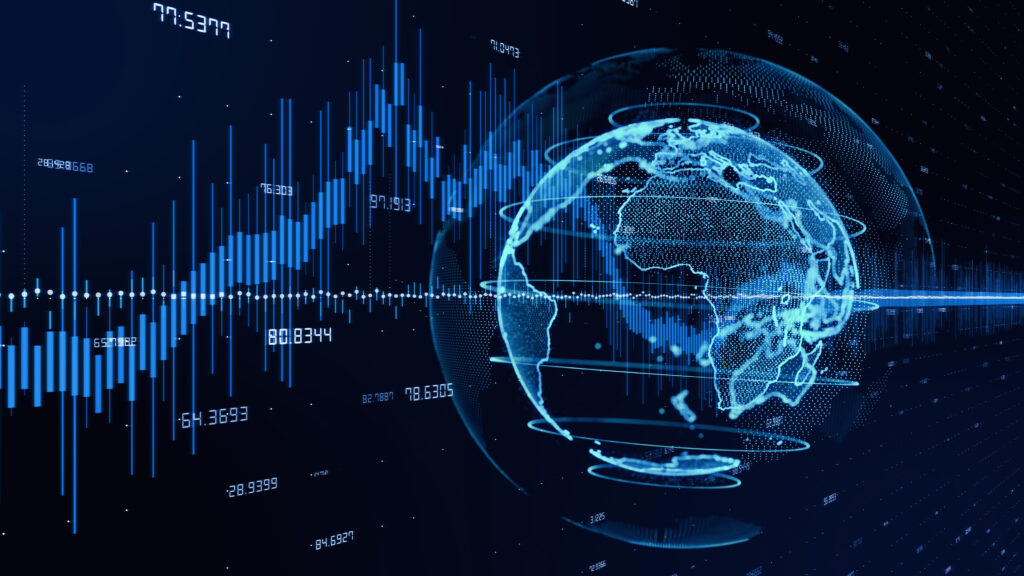
Grades 9-12

Don't have an account yet? Sign up for free
Don't have an account yet? Sign up for free

Deflationary conditions in the United States have not returned since the Great Depression. Instead, U.S. policymakers have frequently found it necessary to battle inflation over the past sixty years. While not a problem in America, concerns have been recently voiced about the economic effects of deflation in Japan. This EconomicsMinute examines (approximately one century after the publication of “The Wonderful Wizard of Oz”) the extent to which the deflationary “wizard” can be expected to influence economic prosperity in Japan at the dawn of the twenty-first century.
In a prior EconomicsMinute lesson, we explored the relationship between deflation (a decline in the average level of prices) and economic activity. Over the final 30 years of the nineteenth century, the United States experienced frequent bouts of deflation. Declining overall prices had a particularly harmful effect on the agricultural sector. As net debtors, farmers faced adverse economic circumstances that could be traced to having to repay mortgage obligations out of current incomes that had been eroded by reduced prices for farm products. Farmers (as well as others who were sympathetic to their plight) pleaded with policymakers to adopt a new monetary standard that would essentially lead to an expansion of the United States money supply. Among other things, farmers recommended that the U.S. sanction the use of both silver and gold as our official measure of money (at the time the United States used a simple gold standard). The debate over silver (and a bimetallic monetary standard) was indeed the leading issue of the presidential campaign of 1896.
 It was this debate that L. Frank Baum allegorized in his 1900 book The Wonderful Wizard of Oz. Without the deflation of the late 1800s, Baum would not have had the inspiration to write this famous children’s book (and the famous 1939 movie, “The Wizard of Oz” -viewed by millions- would not have been made)! For a more detailed discussion of how Baum’s work translates into a political and economic commentary of the debate over “sound money” at the end of the nineteenth century, see “https://www.econedlink.org/resources/the-road-to-emerald-city-is-paved-with-good-intentions/.”
It was this debate that L. Frank Baum allegorized in his 1900 book The Wonderful Wizard of Oz. Without the deflation of the late 1800s, Baum would not have had the inspiration to write this famous children’s book (and the famous 1939 movie, “The Wizard of Oz” -viewed by millions- would not have been made)! For a more detailed discussion of how Baum’s work translates into a political and economic commentary of the debate over “sound money” at the end of the nineteenth century, see “https://www.econedlink.org/resources/the-road-to-emerald-city-is-paved-with-good-intentions/.”
While the United States eventually recovered from the deflation of the late 1800s without any major changes to its monetary system, the ravages of deflation were once again felt during the Great Depression of the 1930s. The price level declined by nearly nineteen percent over this decade. This deflation occurred at the same time that the unemployment rate accelerated to unprecedented levels (in 1929, the national unemployment rate was 3.2 percent, but by 1933 it had increased to 25.2 percent) and the level of real GDP declined (real output in the United States did not return to its 1929 level until 1939).
Deflationary conditions in the United States have not returned since the Great Depression. Instead, U.S. policymakers have frequently found it necessary to battle inflation over the past sixty years. While not a problem in America, concerns have been recently voiced about the economic effects of deflation in Japan. This EconomicsMinute examines (approximately one century after the publication of The Wonderful Wizard of Oz) the extent to which the deflationary “wizard” can be expected to influence economic prosperity in Japan at the dawn of the twenty-first century.
A Visit From The Wizard?
While Japan has not had problems of the same magnitude of those experienced in the U.S. during the 1930s, the Japanese have suffered deflation, declining output, and rising unemployment in recent quarters, as can be seen at International Economic Trends .
A recession is often defined as a period marked by at least two consecutive quarters of decline in real GDP.
Concerns about deflation (and the economic problems associated with it) have caused the Bank of Japan to attempt to “reflate” the Japanese economy in recent months. Monetary authorities have apparently resolved to use an aggressive expansionary monetary policy to drive up domestic demand and increase inflationary expectations.
See “Morning In Japan? The Bank of Japan Gets Radical .”
Deflation can be harmful to an economy when people expect prices to fall in the future. Expectations of falling prices can be self-fulfilling. That is, if households and businesses expect lower prices, this can cause a reduction in demand, leading to lower prices. Unless and until the central bank increases liquidity in financial markets, decision makers will likely continue to withhold purchases of goods and services. This reasoning is behind the author’s suggestion to flood the market with money.
It’s Real Interest Rates That Matter
While at first appearance it may seem peculiar that business and household spending has not been particularly responsive to low interest rates, economists have long asserted that it is real interest rates that matter. Real interest rates are the difference between nominal (also known as market) rates of interest and the expected rate of inflation. For example, if the rate on 30-year U.S. Treasury bonds is 7 percent (note that this is the nominal rate) and Americans expect the price level to rise by 3 percent, the real interest rate is 4 percent (the 7 percent nominal interest rate minus the 3 percent expected inflation rate).
For borrowers, the real rate reflects the true cost of borrowing. Borrowers repay loans in future dollars whose purchasing power has been eroded by inflation. For most loans, borrowers are actually better off when inflation unexpectedly increases. This allows borrowers to repay their loans (assuming fixed nominal interest rates) in lesser valued future dollars. For similar reasons, the real interest rate also reflects the real return to lending. Unexpectedly high inflation benefits borrowers while unexpectedly low inflation benefits lenders.
Businesses investment spending and household purchases of durable goods (these are the expenditures that typically require financing) are therefore likely to increase (decrease) when real interest rates fall (rise). It is important to remember that these spending decisions depend on real (as opposed to nominal) interest rates. Just because market interest rates have declined does not mean that the climate for consumer and business spending has become more favorable.
[Note to teachers: Suggested Extension Activity. Separate the class into two equally sized groups-the “flations” and the “nominals.” Give one slip of paper, with one of the entries from the “flations” column below written on it, to each member of the “flations” group. Now do the same for the “nominals” group from the “nominals” column.]
| Nominals | Flations |
| B 2% | B –2% |
| B 3% | B –1% |
| B 4% | B 0% |
| B 5% | B 1% |
| B 6% | B 2% |
| B 7% | B 3% |
| B 8% | B 4% |
| B 9% | B 5% |
| L 2% | L –2% |
| L 3% | L –1% |
| L 4% | L 0% |
| L 5% | L 1% |
| L 6% | L 2% |
| L 7% | L 3% |
| L 8% | L 4% |
| L 9% | L 5% |
Instruct students that each slip of paper has two pieces of information on it. “B” stands for borrower, “L” stands for lender, and the nominal rate of interest is on the slip for the “nominals”while the expected rate of inflation (or deflation) can be found on the slip for the “flations.” Now give students in the two groups two minutes to match up with one another to determine a real interest rate. Each student knows the nominal interest rate or the inflation rate that s(he) has. If they are a “B” then this means that they are a borrower. They want to find a partner who is also a borrower to construct a real interest rate that is as low as possible (since this is what borrowers wish to do). Thus, if you are a “nominal” borrower, you are looking for a “flation” who is also a borrower who has the highest possible inflation rate. If you are a “flation” lender, you are looking for a “nominal” lender who has the highest possible nominal interest rate. There is no need to give students too long to find a partner. Don’t let borrowers and lenders commingle. Make sure that there is an even numbers of borrowers and lenders. When you are finished, give a prize to the lending and borrowing teams that have the highest and lowest real interest rates, respectively (note that the highest potential real interest rate is 11% {9% nominal interest rate – (-2% inflation rate)} and the lowest potential real interest rate is –3% (2% nominal interest rate – 5% expected inflation rate). This activity reinforces how real interest rates are determined. It also helps students understand that borrowers (lenders) prefer lower (higher) real interest rates.
Interest Rates In Japan
The traditional effect of a decrease in Japanese short-term interest rates on consumer and business spending is likely to be negligible. Indeed Japanese interest rates are already at historical lows, as can be seen at International Economic Trends .
 It is easy to see how efforts by the Bank of Japan to stimulate demand by lowering short-term interest rates will prove unsuccessful in an economic setting in which interest rates are already so low. Indeed, it is a distinct possibility that real interest rates are higher than these low market interest rates. Suppose that Japanese businesses and households expect a 2 percent deflation. This implies that the real short-term rate of interest is over 2 percent and, more important, the real long-term rate of interest is approximately 4 percent. While we have no direct evidence about the expected rate of inflation (or deflation) in Japan, it is safe to guess that is not much greater than zero. This means that it is entirely likely that Japanese real interest are greater than corresponding nominal interest rates. As such, this is not entirely different from the financial market conditions experienced in the U.S. Great Depression in the 1930s.
It is easy to see how efforts by the Bank of Japan to stimulate demand by lowering short-term interest rates will prove unsuccessful in an economic setting in which interest rates are already so low. Indeed, it is a distinct possibility that real interest rates are higher than these low market interest rates. Suppose that Japanese businesses and households expect a 2 percent deflation. This implies that the real short-term rate of interest is over 2 percent and, more important, the real long-term rate of interest is approximately 4 percent. While we have no direct evidence about the expected rate of inflation (or deflation) in Japan, it is safe to guess that is not much greater than zero. This means that it is entirely likely that Japanese real interest are greater than corresponding nominal interest rates. As such, this is not entirely different from the financial market conditions experienced in the U.S. Great Depression in the 1930s.
Negative Market Rates of Interest?
Japan has recently experienced a phenomenon that has not been generally observed since the era when goldsmiths accepted deposits for safekeeping—negative interest rates on bank deposits! This seemingly unlikely occurrence (depositors actually pay banks to hold onto their money) can occur when depositors are willing to pay fees to banks for storing cash in bank safes. See “https://www.thoughtco.com/zero-nominal-interest-rates-1146230 “ [Note to teachers: This requires that you use Adobe Acrobat to read the file.]
Return To Kansas
Just as the Wonderful Wizard of Oz concludes with the happy ending of Dorothy’s return to Kansas, so too will Japan persevere in its current struggle with moderate deflation. Indeed, recent evidence suggests that the Japanese economy has begun to turn around. Output has grown, interest rates have increased, and inflation has picked up. While we would not normally applaud rising market interest rates and accelerating inflation, this appears to be precisely what is needed in Japan. This just shows that anything is possible in the Land of Oz!
Additional funding for this site was provided by the Mortgage Bankers Association of America.
Have studets complete the following the complete the following questions pertaining to the readings found in this lesson.
What is the real interest rate when the nominal rate of interest is 10 percent and the expected inflation rate is 4 percent? [6 percent]

Grades 9-12

Grades 9-12

Content Partner
Grades Higher Education, 9-12

Grades 9-12
